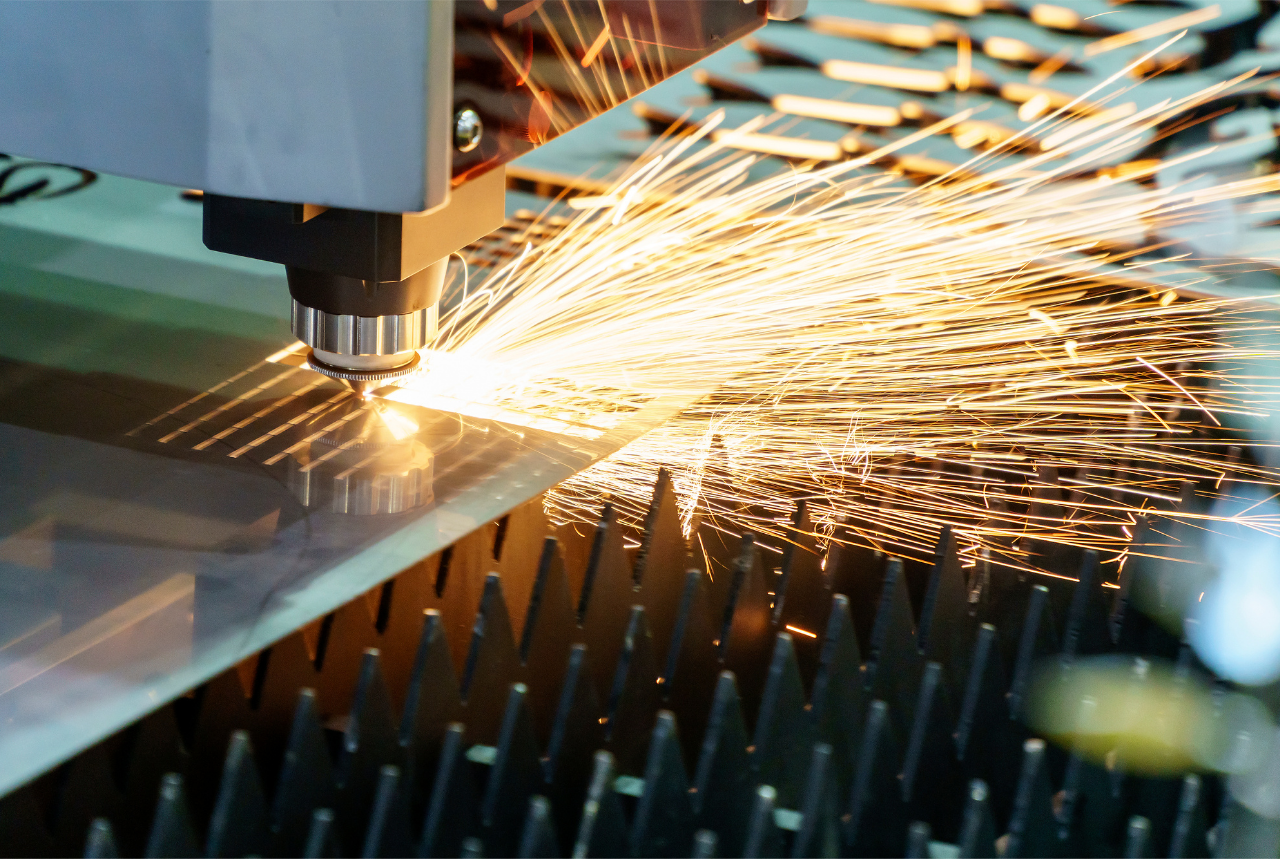The field of manufacturing has been revolutionized by the advent of rapid prototyping, an umbrella term for a variety of manufacturing methods that can rapidly and cost-effectively produce prototypes and components. Over the past few decades, this area has expanded tremendously, and as techniques such as additive manufacturing, CNC machining, injection molding, and vacuum casting are becoming more affordable and available, rapid prototyping has become an integral part of all industries’ product growth.
Rapid prototyping is the rapid manufacture using 3D computer-assisted design of a physical component, model, or assembly. Using additive manufacturing, or more commonly known as 3D printing, the production of the component, model, or assembly is typically completed. In comparison to a low fidelity prototype, where the design closely resembles the proposed finished product, rapid prototyping using selective laser melting is said to be a high-fidelity prototype, where there is a marked difference between the prototype and the final product.
Importance of Rapid prototyping services
Companies need to grow and launch new goods faster in this rapidly shifting modern-day consumer market to stay competitive. Since faster product creation and advancement in technology are crucial to the success of a company, the most important aspect of new product development is rapid prototyping. Via rapid prototyping, the following goals are achieved.
- Faster creation of innovative products: In the process of developing popular products, prototyping plays a crucial role because it accelerates the innovative process of product growth.
- Early step design validation of the design’s form, shape, and function.
- Final stage testing of the product against the technical specifications and business goals.
- It facilitates the testing of features to test the concept’s goals and to finalize the specification.
- The prototype offers hands-on user experience to the end-user, client, customer, user participants to get feedback.
Let’s understand the Rapid Prototyping Process
To create prototypes, some prototyping processes use conventional production methods, whereas other innovations have emerged more recently. There are hundreds of ways you can build prototypes. As prototyping methods continue to develop, product designers are continually trying to decide for their particular application which approach or technology is best. This white paper discusses the benefits and shortcomings of the designers’ main prototyping processes now available. It provides explanations of processes and describes material properties of parts created by each particular choice for prototyping. Furthermore, when selecting a prototyping method, a helpful tree illustrates key questions designers need to remember. Ultimately, the aim is to help people choose the best prototyping method for the period of product growth.
- Injection molding: As in production injection molding, rapid injection molding works by injecting thermoplastic resins into a mold. The technology used to manufacture the mold, which is often made of aluminum instead of the conventional steel used in production molds, is what makes the process fast. Molded components have excellent finishes and are solid. It is also the normal manufacturing process for plastic parts in the industry, so if the situation allows, there are inherent advantages to prototyping in the same process. It is possible to use almost any engineering-grade plastic or liquid silicone rubber, so the designer is not limited by the prototyping process’s material limitations.
- Computer numerically controlled machining: In machining, solid plastic or metal block is clamped into a CNC mill or lathe and, by a subtractive process, cut into a finished component. This technique typically produces superior strength and surface finish for any method of additive processing. It also has the full, homogeneous properties of plastic because, as opposed to most additive processes that use plastic-like materials and are formed in layers, it is made from solid blocks of extruded or compression molded thermoplastic resin.
- Selective laser sintering: SLS is one of the processes available at Protolabs for additive processing. A computer-controlled CO2 laser draws from the bottom up on a hotbed of nylon-based powder during the SLS process, where the powder is lightly sintered into a solid. A roller lays a fresh layer of powder on top of the bed after each layer, and the process repeats. SLS uses rigid nylon or elastomeric TPU powders similar to real engineering thermoplastics, so that components have greater strength and are precise, but has a rough surface and lack of fine details. SLS produces a large amount of construction, can produce parts with highly complex geometries, and produce robust prototypes.
Rapid Prototyping Services
In pursuit of rapid prototyping services to speed up the product development cycles for engineers and product designers. Companies provide several easy manufacturing methods that can be used easily and affordably to produce prototypes. While any individual prototype can be created in numerous different ways, it is ultimately up to the engineer to decide-process, and material is ideally suited to their product. Advances in additive manufacturing technology have made 3D printing a go-to option for engineers in recent years in search of rapid prototyping solutions: parts can be printed in a range of different metals and plastics easily and cheaply. Many 3D printed parts can be manufactured and delivered at a low cost in as little as a single day.
Rapid Prototyping Cost
Many buyers are interested in the expense of Rapid Prototyping. It is common to know the quotation of the prototype in advance, but the engineering personnel needs to carefully measure the quotation of the Rapid Prototype. Many factors influence the cost of rapid prototyping. They must first submit 3D sketches to the salesman if people want to know, and then notify the company of their specifications, such as products, manufacturing technology, precision criteria, surface treatment, distribution, or other supplementary services. All can impact the price of the quote. If lead time is reduced, costs are likely to be reduced, too. This not only enables companies to decrease bottom-line costs but also enables them to cost-effectively generate alternative prototypes.
- Hollow components: Allowing the creation of hollow parts that use less material without losing strength and are lighter while in use, which greatly benefits industries such as aerospace.
- Reduced waste: There is no waste other than minimal residue. This is in stark contrast to conventional subtractive methods, which, at great expense, discard waste materials.










